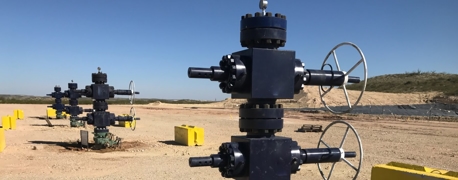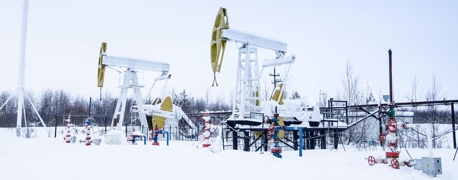4 Leading Causes of Pipeline Explosions

It was early in the morning on Sunday, August 15, 2021. The residents of Coolidge, Arizona were in their homes, sleeping, when an explosion rocked their community. The Pinal County Sheriff’s Office started receiving calls of a possible explosion at a local farmhouse. When fire crews arrived at the scene, they found the unthinkable: a father and his teenage daughter had perished inside. Emergency personnel found a woman who had managed to crawl out a window to escape the fire, with severe burns over half of her body.
What caused this horrific incident? A natural gas pipeline had exploded.
Pipeline explosions have the potential to level homes and communities without warning, claiming innocent lives and causing millions of dollars in property damage. But why do these explosions happen? Corrosion, aging pipelines, natural disasters, and excavation are a few of the leading causes. Let’s take a deeper look into America’s pipeline network, what causes pipeline explosions, and who’s responsible.
There Are 3 Million Miles of Pipeline in America
According to the U.S. Energy Information Administration (EIA), the pipeline network in America is made up of about 3 million miles of mainline and other pipelines. This massive network is responsible for carrying natural gas throughout the country, from storage facilities and plants to consumers. There are small low-pressure pipelines that move raw natural gas from wellheads to processing plants, wide high-pressure pipelines that carry natural gas across states and over state lines to storage facilities and distribution centers, and narrow lower pressure service lines that deliver natural gas to consumers.
The U.S. Department of Transportation’s Pipeline and Hazardous Materials Safety Administration (PHSMA) may state that pipeline transportation is “one of the safest and most cost-effective ways to transport natural gas and hazardous liquid products,” but the numbers say otherwise. According to PHMSA statistics from 2002 through 2021, there were 5,794 “significant” pipeline incidents in the United States. These include any pipeline incidents that caused injury requiring in-patient hospitalization or death, caused at least $50,000 in damage, released at least 5 barrels of oil, or caused an unintentional fire or explosion.
These pipeline incidents caused:
- 260 deaths
- 1,112 injuries requiring in-patient hospitalization
- $11.04 billion in losses/damage
There are four primary causes of pipeline explosions.
1. Aging Pipelines
About half of the natural gas pipeline network in the United States was built and installed back in the 1950s and 1960s. Some pipelines are even older. The PHMSA discusses the danger of these aging pipelines on its website: “Cast and wrought iron pipelines are among the oldest energy pipelines constructed in the United States. Many of these pipelines were installed over 60 years ago and still deliver natural gas to homes and businesses today. However, the degrading nature of iron alloys, the age of the pipelines, and pipe joints design have greatly increased the risk involved with continued use of such pipelines.”
Old pipelines may be made of iron, which can become brittle and crack or break over time, or of steel, which is prone to corrosion. These aging pipelines can cause devastating explosions if they are not replaced. That’s what happened in downtown Allentown, Pennsylvania on February 10, 2011. An 83-year-old pipeline failed, causing a massive explosion that claimed 5 lives.
The Allentown pipeline explosion prompted the PHMSA to issue a Call to Action for operators to replace high-risk pipeline infrastructure. Since then, 22 states have eliminated cast and wrought iron pipelines from their natural gas networks, but that leaves more than half of the nation vulnerable to explosions and other serious incidents caused by aging pipelines.
2. Excavation Damage
About one in four pipeline incidents is caused by excavation damage, according to PHMSA statistics cited in a Biological Diversity article. From 2005 through 2019, excavation damage caused 1,052 pipeline incidents, 48 fatalities, and 195 injuries requiring in-patient hospitalization. These incidents typically happen when workers unintentionally contact a gas line while digging for another purpose.
Excavation pipeline explosions have occurred while crews were digging to install fiberoptic conduits, repair sewer lines, plant trees, or even repair gas lines themselves. If an excavator or other piece of equipment contacts a natural gas line, it can cause a serious leak or an immediate explosion, injuring workers and damaging buildings and homes nearby. Everyone in the area may be at risk.
You may be familiar with the phrase, “Call before you dig! Dial 811.” This is the number for the Utility Locator Service, a one-call center that can locate and mark utility lines before excavation begins. In some states, however, certain parties are exempt from contacting one-call centers. Texas is one such state. In Texas (which has the biggest network of natural gas pipelines), farmers, county and state road crews, oil and gas drillers, railroad maintenance crews, and gravediggers are not required by law to contact one-call centers before digging. This only increases the chances of a serious pipeline explosion.
3. Equipment Failure
The PHMSA lists equipment failure as the cause of 17.1% of significant pipeline incidents from 1986 through 2013. Many equipment failure-related pipeline explosions and other incidents occur on company property and may involve the malfunction or failure of pumps, valves, tanks, meters, compressors, and other parts of pipeline systems. This can lead to leaks and explosions.
Pipeline operators are required to inspect pipelines, valves, pressure gauges, storage tanks, and all other parts to make sure they are functioning properly. They must perform repairs or replace aging and faulty equipment as needed, and they must also perform risk assessments to prevent pipeline incidents in the first place.
4. Natural Forces & Heavy Weather
Hurricanes, flooding, earthquakes, and other natural forces are other potential causes of pipeline explosions. After Hurricane Ida struck the Louisiana coast in 2021, oil spills were spotted in the Gulf of Mexico. One was over 10 miles long. In 2012, Hurricane Sandy caused considerable damage to natural gas pipelines in New Jersey, resulting in more than 1,600 leaks. After Hurricane Sandy caused the San Jacinto River to flood in 1994, the world watched as a burning mass of released oil made its way downriver – a 40-inch pipeline had ruptured.
Natural disasters and severe weather can seriously damage pipelines, causing leaks, significant spills, fires, and explosions that not only cause injury and environmental damage but that leave countless homes and businesses without gas.
Pipeline operators may not be able to control Mother Nature, but they do have an obligation to build pipelines in areas that are less likely to experience flooding or landslides. If they must build in an area where tornadoes or hurricanes may occur, they should construct pipelines in such a way as to withstand flooding or other damage. This is a requirement of the Code of Federal Regulations (CFR) § 192.317(a).
Why Do Pipeline Explosions Happen?
Popular opinion sees a lack of proper oversight and aging infrastructure as the two primary problems with America’s natural gas pipeline system. The truth of the matter is that it boils down to companies that do not prioritize safety. Instead of focusing on ensuring their pipeline systems, processing plants, and storage facilities are properly maintained and upgraded, they think of profits and productivity first.
There is no excuse for pipeline explosions. There are only causes – real, identifiable causes – that can be traced back to an act of negligence or wrongdoing, typically on the part of a big company in an attempt to turn a profit. To learn more about the causes of pipeline explosions and what you can do if you or someone you love has been injured, contact Arnold & Itkin. We’re here to help.
- Categories


